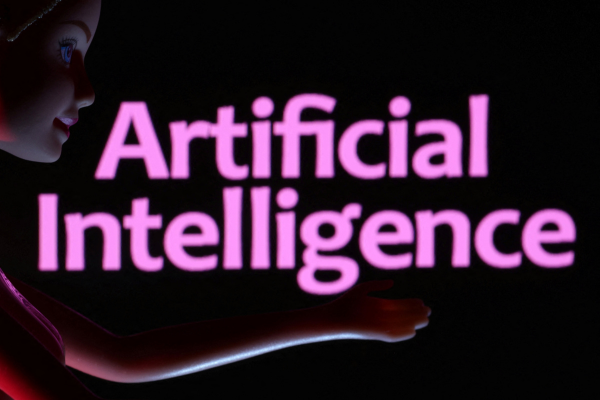Mainframes in a cloud-dominated landscape

Dennis Smith at Gartner explores unlocking mainframe modernisation patterns for long-term success
In a technology landscape increasingly dominated by the cloud, it’s easy to overlook the enduring significance of mainframes. These robust computing platforms continue to play a pivotal role in supporting critical workloads for numerous organisations.
For those organisations committed to maintaining their mainframes as a long-term strategic asset, infrastructure and operations (I&O) leaders need to adopt a well-defined strategy for modernising their mainframe environment.
When embarking on the journey of modernising mainframes, they need to understand the various strategies that can be undertaken and how they can be applied effectively. Gartner categorises these strategies into three primary approaches: retirement, caretaking and leverage.
Retirement, caretaking and leverage
In the retirement category, organisations are committed to migrating all workloads away from the mainframe. This approach is often adopted by smaller organisations with limited mainframe footprints, where the cost and overhead become prohibitive, and talent retention becomes a challenge.
While the goal is to migrate everything, certain workloads may prove challenging to move due to complex interdependencies. In such cases, replacing legacy applications with cloud-native solutions or considering mainframe-as-a-service offerings might be the most viable solution.
On the other end of the spectrum, the caretaking approach involves keeping the mainframe operational without a clear strategy for retirement or modernisation. This stance is, unfortunately, quite common among enterprises, and it comes with its share of risks.
By continuing to maintain the mainframe without a strategic plan, there is a risk of falling behind competitors leveraging cloud-native technologies. The overall hybrid strategy can also be disrupted as the mainframe environment remains static and fails to evolve with other technological advancements.
The leverage category is where modernisation patterns come into play. It’s reserved for companies that can genuinely leverage the mainframe’s capabilities effectively for their workload requirements. The key to this approach lies in rationalising workloads and determining the most suitable computing environment for each.
However, it’s essential to avoid the pitfall of keeping workloads on the mainframe simply by default. Furthermore, acknowledge the ongoing need for mainframe expertise and ensure seamless integration into their larger hybrid story.
Modernising mainframes effectively
First, analyse your application portfolio meticulously. The decision on which applications should stay on the mainframe is paramount. Some applications might benefit from partial migration, such as moving the front end to a more user-friendly web interface or interacting with specific functions on alternative platforms.
However, for certain workloads, the mainframe’s intrinsic advantages, including environmental and data security, high availability, consistent performance, vertical scaling, massive capacity, and separation of compute and I&O, make it the optimal platform.
Once the strategy is clear, modernisation patterns play a pivotal role. They offer a blueprint for unlocking the potential of mainframes, with one such pattern enhancing the developer experience.
By providing mainframe developers with modern integrated development environments and advanced tooling, organisations can significantly boost productivity and create a more user-friendly interface. This not only helps keep pace with evolving technology but also bridges the gap between legacy systems and the dynamic world of cloud and distributed development.
The integration of the mainframe into an enterprise’s DevOps pipeline is another vital pattern. It allows organisations to select the most suitable environment for each workload, optimising the allocation of resources and promoting staff efficiencies.
This approach streamlines operations and brings the mainframe into the conversation as a preferred platform for critical workloads. It also offers integration with open-source solutions, eliminating redundancy and enhancing staff efficiencies.
API enablement is a key pattern, facilitating the mainframe’s integration into hybrid architectures. Enable the mainframe to communicate via APIs which can seamlessly integrate it into a larger ecosystem. This promotes data exchange, fosters interoperability, and extends the mainframe’s role in the enterprise, creating a more agile and flexible IT environment.
The hybrid data grid modernisation pattern addresses the challenges associated with accessing mainframe data. It enables real-time access to this data through a continually updated cache, breaking free from periodic data transfers. This results in a more agile, data-driven enterprise, where the mainframe’s wealth of information is a powerful asset.
The incorporation of artificial intelligence (AI) and machine learning (ML) into mainframes is another crucial modernisation pattern. By leveraging on-chip AI hardware acceleration for handling massive data volumes with low latency, organisations can train AI models in the cloud and then run and refine them on the mainframe, making legacy data accessible and actionable in today’s data-driven world.
Sustainability is one of many pressing concerns for organisations and this applies no differently to mainframes. Deploying Linux on the mainframe presents a compelling alternative to horizontal server build-outs. Linux on the mainframe creates an energy-efficient and cost-effective infrastructure, contributing to both ecological and economic goals.
Mainframes are not obsolete relics but powerful assets that, when modernised, can continue to drive business-critical workloads efficiently. By adopting the right strategy and applying modernisation patterns, I&O leaders can unlock the full potential of mainframes, ensuring they remain relevant and valuable components of their IT landscape in the years to come.
Dennis Smith is Distinguished VP Analyst at Gartner. Gartner analysts, including Dennis Smith explored the topic and how to enhance operations and spark innovation at the Gartner IT Infrastructure, Operations & Cloud Strategies Conference, which took place from 20-21 November 2023 in London
Main image courtesy of iStockPhoto.com

Business Reporter Team
Most Viewed
Winston House, 3rd Floor, Units 306-309, 2-4 Dollis Park, London, N3 1HF
23-29 Hendon Lane, London, N3 1RT
020 8349 4363
© 2025, Lyonsdown Limited. Business Reporter® is a registered trademark of Lyonsdown Ltd. VAT registration number: 830519543





